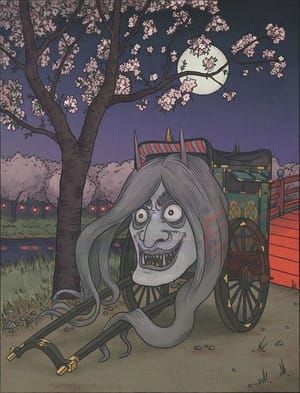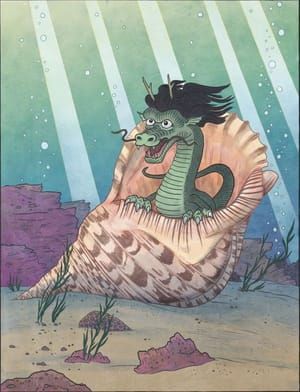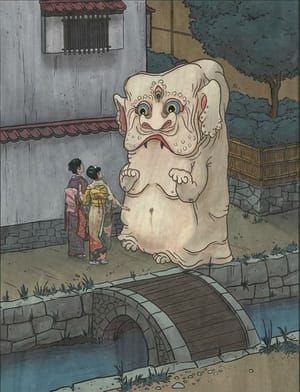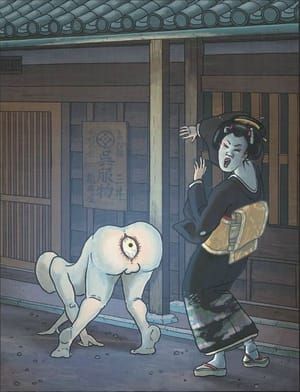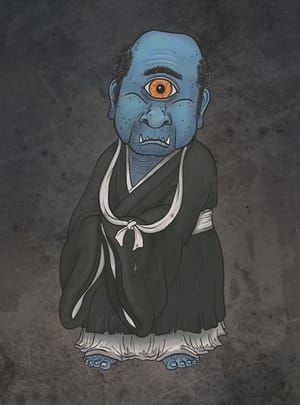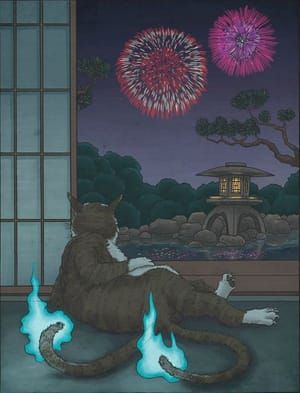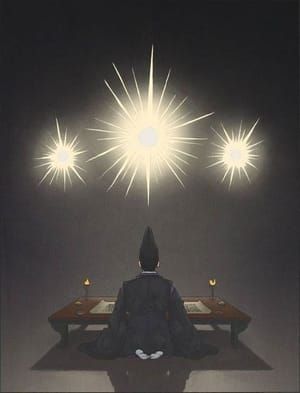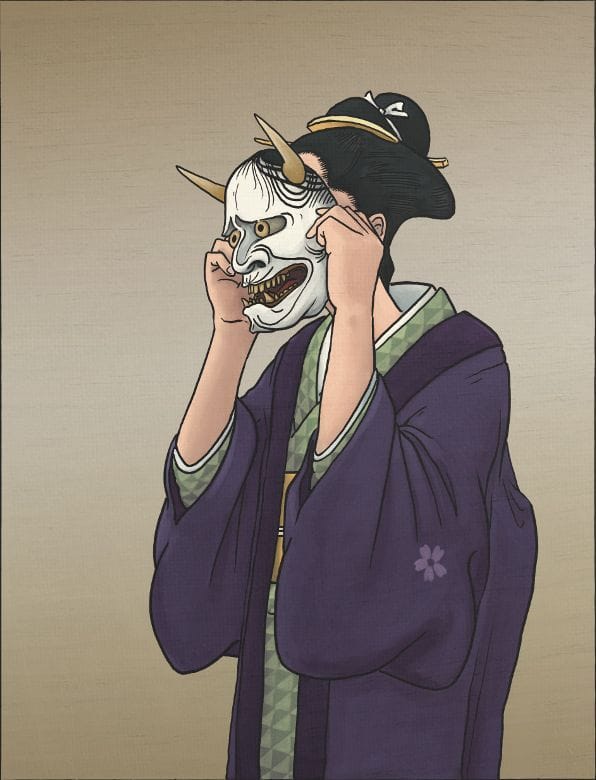

Hannya, 2014
Matthew Meyer
般若
Hannya refers to demons or oni; more specifically to female demons called kijo—even more specifically to those kijo which appear in noh theater. They were once human women who were consumed by jealousy and transformed into demonesses. The name hannya also refers to a specific type of demon mask used in noh theater.
There are three grades of hannya: namanari, chūnari, and honnari. Namanari hannya are kijo that still resemble human women. They have small horns and use dark magic to perform their evil deeds, such as summoning ikiryō to attack their enemies. They are not completely evil; there remains a chance for these beginner demons to return to humanity. Chūnari hannya are mid-level demons. They have long, sharp horns, tusk-like fangs, and more powerful magic. However, they are still vulnerable to Buddhist prayers. Honnari hannya are true demons and the most powerful of the three. They have serpentine bodies and breathe fire. Honnari hannya have embraced their jealousy so deeply that there is no calming their fury.
Hannya originate from the Sanskrit term for wisdom—specifically Prajñāpāramitā, the highest form of Buddhist wisdom which leads to enlightenment. The juxtaposition of the highest form of wisdom and creatures who represent direct opposition to that wisdom comes from the use of the hannya mask in noh. In the play Aoi no Ue, a shugenja (an ascetic mystic) exorcises the spirit of the hannya Lady Rokujō from Lady Aoi. As it is driven away, the evil spirit cries out, “Oh, how horrible! The voice of wisdom is like a demon!” Since then, demon masks and wisdom have been associated with each other.
The three most famous hannya from Japanese literature are Lady Rokujō from Aoi no Ue, Kurozuka from Kurozuka, and Kiyo-hime from Dōjō-ji.
Matthew Meyer
artistArthur
coming soon
